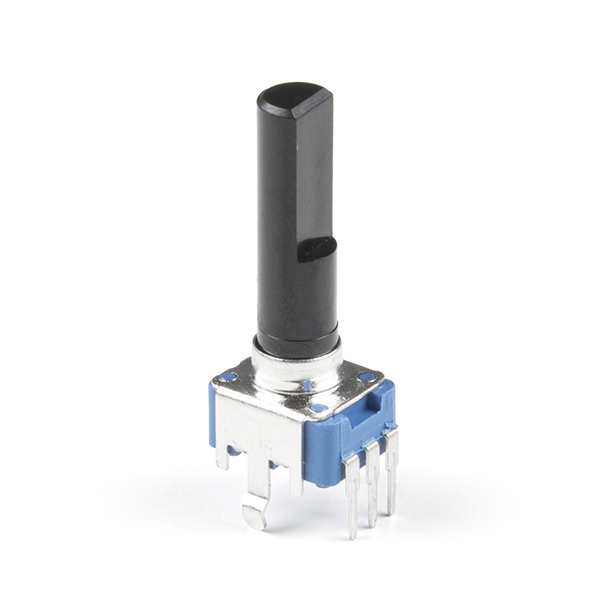Rotary Potentiometer - Linear (10k ohm)
An adjustable potentiometer can open up many interesting user interfaces. Turn the pot and the resistance changes. Connect VCC to an outer pin, GND to the other, and the center pin will have a voltage that varies from 0 to VCC depending on the rotation of the pot. Hook the center pin to an ADC on a microcontroller and get a variable input from the user!
This is a center-tap linear type potentiometer. The outer two pins will always show 10K resistance, the center pin resistance to one of the outer pins will vary from 10K Ohm to about 50 Ohm. The pot is linear meaning the resistance will vary linearly with its position. This is a good choice for general user interfaces.
This pot works great in a breadboard but on a few breadboards, you may have to trim off the large metal anchors.
Model #: R0902N-DD1-B10K-GP
Rotary Potentiometer - Linear (10k ohm) Product Help and Resources
Core Skill: Soldering
This skill defines how difficult the soldering is on a particular product. It might be a couple simple solder joints, or require special reflow tools.
Skill Level: Noob - Some basic soldering is required, but it is limited to a just a few pins, basic through-hole soldering, and couple (if any) polarized components. A basic soldering iron is all you should need.
See all skill levels
Comments
Looking for answers to technical questions?
We welcome your comments and suggestions below. However, if you are looking for solutions to technical questions please see our Technical Assistance page.
Customer Reviews
No reviews yet.


The description says: "Turn the pot and the resistance changes. Connect VCC to an outer pin, GND to the other"
Which pin is the outer pin for the VCC and the GND? Is it pin 1 for VCC and pin 3 for GND?
whichever
These are much better for the Arduino as they cover the 0-1023 range evenly unlike the non-linear(Taper) version.
I agree. Even if you do want logarithmic control, you can do it programmatically as the Arduino math library has the log() function.
Pot works well and seems pretty sturdy. Pairs well with knobs like this.
Anyone know what part to use (in the SFE Eagle library) for this pot?
Grab and load the SparkFun-built eagle library...http://www.opencircuits.com/SFE_Footprint_Library_Eagle.
Add the "Spark Fun" >> "POT" >> "POT" part (ALPS POT). That's it. Hat's off to SparkFun for creating a library with most of the parts they sell in it. Top notch stuff.
Good question...I'm searching for that now.
Can these pots handle .25 watts of power draw on them?
I don't think they can... at least not for continuous use. The datasheet specifies a power rating of 0.05 W.